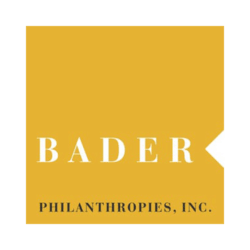Viktor Samko
Viktor Samko, born 1920, Jelšava, Revúca district
-
Testimony abstract
Viktor Samko recalled that he sent a message to his parents to bring him food for the journey;[1] he left the station at Jelšava by train at eleven o’clock for the village of Plešivec, from there to Šafárikov (in 1992 renamed Tornaľa) and to Miskolc (Miškovec), where he spent two days locked in a barracks. From Miškolc they took him to Budapest and eventually to Komárno where he spent maybe two and a half months in Csillag Bőrtényi.[2] He described how down below [in the fortress] they waded up to their knees in mud and the guard walked above them. After that the Hungarians loaded them onto goods wagons and took them to Dachau concentration camp [about 600 km as the crow flies]. Samko described the terrible conditions of their transport, when they had nothing to eat or drink and had to relieve themselves by the wagon doors. He drank his own urine. When at one stop they asked for water, some German or other threw snow to them through the barred window; Samko remembers that it at least quenched their thirst for a while. It was raining when they arrived at Dachau and when they were driven out of the wagons the first thing they did was to drink the water in the puddles. One German who knew Czech and Slovak reassured them that there was a good supper with tea waiting for them in the reception building, but instead of that they had their heads and the rest of their bodies shaved, and they had to wash in a barrel of ice cold water. Samko was given striped prisoners’ clothing with a number and the inscription PZ, meaning “partisan”, on the back.
They were given thin soup, and one loaf of bread for fifteen men. Whereas the first day they were allowed to sleep until eight in the morning, from the second day the wake-up call went at five o’clock and they walked about two kilometres to get to work in the aeroplane factory. Samko remembers that no one was allowed to pause even for decond while they were working or they would be beaten immediately, or killed on the spot. One elderly Jewish man who was not working was hit on the head with a rifle butt by a German and died there and then. Samko fainted from fear, but his friends Dongo and Edo held him up and supported him. A cart came for the dead body and took it to the crematorium.
Samko recounted one more situation when he was saved by the protection of the Roma from Košice. He described how they were making aeroplane parts – what he called špáringy,[3] but he was tired and ill and so stopped working and rested. He didn’t notice the guard coming up behind him and was hit on the head from behind with a rifle butt. His feeling of futility and disillusion made him want to throw himself on the departing guard and kill him, even if it meant he died himself, but the others held him hack.
The hunger was so bad they searched the pockets of corpses to see if they had something to eat on them. Samko found three or four potato peelings in the pocket of one dead man. They weren’t good, and he spat them out, but at least he swallowed the juice from them to allay his hunger.
How to cite abstract
Abstract of testimony from: VAGAČOVÁ Ingrid, FOTTA Martin eds. Rómovia a druhá svetová vojna, Čítanka. Bratislava: Nadácia Milana Šimečku, 2006. ISBN 80-89008-20-8, 125-126 (slk), 133-135 (rom). Testimonies of the Roma and Sinti. Project of the Prague Forum for Romani Histories, https://www.romatestimonies.com/testimony/viktor-samko (accessed 10/19/2025) -
Origin of Testimony
The interview with Viktor Samko was conducted at the end of the 1990s as part of a project by the Milan Šimečka Foundation called “The Fates of those who Survived the Holocaust”. The interview was conducted in Slovak and was recorded on camera. It was shortened in transcription and slightly edited, and was also printed in a translation into the Roma language alongside the original Slovak original.
-
Where to find this testimony




